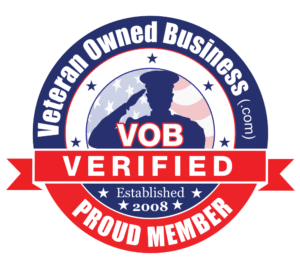What is Branding?
Business branding is far more than your logo. While your logo is an important part of representing who you are—we will talk about it in a little bit—your brand identity goes far beyond the surface. Your brand is who you are as a company. It is your mission, your ethos, and your company culture. It is everything you care about and everything you strive to achieve to be the best you can be for your clients. Your work should reflect this, but even more, your entire company should reflect this motivation. This is branding.
 Client-Centered Branding
Client-Centered Branding
When it comes to developing a company identity, the first question you need to ask yourself is, “Who is my client?” This may seem very basic, but many young companies make the mistake of tailoring their client to their brand and not their brand to their client.
While it is important to have unwavering values that do not sway with trends, it is equally important to recognize that the delivery of those values is crucial for consumer engagement. Your values do you no good if your client cannot see them. This comes down to simple client communication. You need to be able to speak their visual, emotional, and logical languages. How do you do this? You need to know them first.
Target your demographic by researching who is in need of your product or service. Then learn about your potential client’s struggles, values, methods, personality, and even other brands they’ve worked with. Learn what they like about those brands and then adjust your product, service, and marketing accordingly. Incorporate the things that work with other brands and do them better from a different angle. Be sure to communicate that your brand can supply what this other brand cannot by simply being better.

Branding Your Why
Once you have determined your ideal client, you need to clarify your mission. What do you want to give your client? How are you making their lives better? Are you simplifying something? Are you alleviating the pain of some sort? Maybe you are providing them with something brand new. Whatever you are giving them, you need to know the why behind your giving it. This is the key to your marketing. Why do you provide it? Why do they need it?
Then, use creative marketing to drive that mission home every single time.
Be a company that provides value to your customers outside of your monetary products or services. Create online content and engagement that allows your consumers to be educated about their questions in their niche—even before they ask them. This is how you will set yourself up as an authority who cares about their consumer.
Your Brand Identity
Your visual company identity is how people will recognize you. The Starbucks and McDonald’s logos are universally known. Yet, when people think of Starbucks, they do not think of the green goddess in the picture. They think of their beloved pumpkin spice lattes. The same is true whenever they see the logo.
If your branding is done right, this is what your company has to look forward to. When people see your logo they will think of your service, the products you offer, and how much you help them. They will think of how good they feel when they engage with your work and your people. This is the kind of atmosphere you want to create when you are building your brand.
Your logo needs to reflect who you are as a company through its visual appeal—colors, patterns, and wording—but your logo cannot carry your brand. Your responsibility, your ethics, and your way of conducting business will speak for themselves.
Company Culture as Part of Your Brand
The last aspect of creating powerful business branding is the creation of a powerful company culture. Consumers see whether or not an employee is happy at a company. This subconscious recognition communicates very strongly and has a huge impact on whether or not a consumer will do business with a specific entity.
No one likes a salesperson who is moody. Worse is a salesperson who seems so oppressed by their management that they can barely breathe. This makes the consumer uncomfortable, and, by way of empathy, uncomfortable for the employee as well. What to do?
Encourage healthy company culture habits. No manager can force their employees to be friends, but fostering an atmosphere of friendliness is the first step to creating a good company culture. Hosting cross-departmental contests is one such way. Many companies are now investing in small wellness apps and challenging their employees to get healthy. These challenges are offered with small incentives.
For example, you could divide your employees into teams and have one set group weight goal that must be met. The company can set up a series of challenges or requirements to meet that goal. By the end of the week, the group that weighs in at the least gets a free movie gift card.
There are several ways these contests can be arranged, but they create a spirit of camaraderie and friendship among your employees. This not only leads to a happier work environment, but your employees feel better too which makes it so they will engage more cheerfully with your potential consumers.
Another way to promote your company culture is through cooperation with charities. Consumers love to see businesses that care about the less fortunate. Getting your employees’ projects involved with charitable organizations is an excellent way to show your consumers that you want to make a difference in the world. This allows your employees and consumers alike to take care of the things they need while bettering the lives of others. It’s a win-win for everyone.
Branding Your Business
Overall, creating a brand identity that lasts can be tricky. There is no set formula. Every company is different and has a different idea of what its audience needs. Yet, following the advice of these few tips will serve as a guideline so you work towards defining just who your company is—first to yourself and then to the world.






